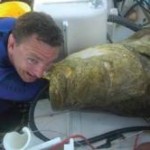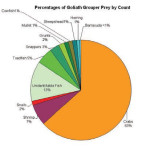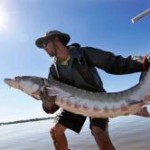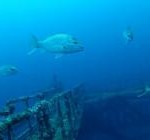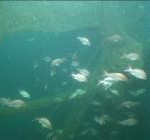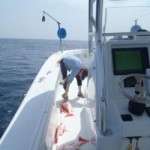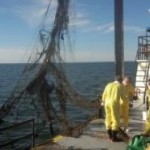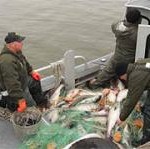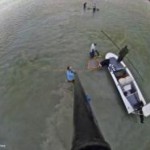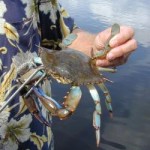Amendment 40 – Anglers Get Dumped
Today’s feature comes to us from Ted Venker, CCA’s Conservation Director, who notes that anglers who want their share of the red snapper fishery had better step forward, now, before it’s too late.
from The Fishing Wire
By Ted Venker, CCA Conservation Director/TIDE Magazine Editor
It’s called the “Friday news dump.”
The White House, other federal agencies and even public corporations have often set the release of bad news and unflattering documents to late Friday afternoon in the hopes that whatever is being released will be ignored or missed or forgotten over the course of the weekend.
Got a scandal? Dump it on Friday.
Got a controversy? Dump it on Friday.
Got a federal policy disaster? Dump it on Friday.
The concept has lost effectiveness with the demise of traditional media. You could get away with it when all you had to avoid was the newspaper on Saturday morning (which no one read because they all had better things to do on the weekend), but the internet never sleeps and so the Friday news dump has become a sad cliché. There is even a website dedicated to it – fridaynewsdump.com. Nonetheless, old habits are hard to break.
So if the jig is up on Friday news dumps, what are you left to do? Well, you up your game and go for the holiday news dump.
Got something wildly unpopular that has been soundly rejected time after time, but you’re going to advance it anyway because it makes your job easier? Dump it on….Christmas Eve!
And so it was that the Gulf of Mexico Fishery Management Council announced on Dec. 24 that it is proceeding with an extremely controversial amendment for sector separation. That followed on the heels of an announcement about an equally controversial pilot program to let a handpicked set of 17 headboats fish year-round for red snapper using their own personal allocation of fish beginning January 1. Releasing information like this on the afternoon of Dec. 24 brings the art of hiding controversial news to a new low.
CCA members have been asked to comment against these schemes many times. The public has already sent literally thousands of comments against concepts that attempt to funnel access to marine resources through a very few select businesses. The response to these concepts has been wildly skewed in opposition, as it is commonly realized that the only people to benefit from them are the businesses that will use those public resources for their own financial gain.
However, just like when you played football as a kid in the field by your house, somebody didn’t like the results and called “Do-over.” None of those previous comments apparently counted. Not even the ones from Texas Governor Rick Perry. Nope, sorry Congressional Sportsmen’s Caucus, yours didn’t count either.
The Council let it be known with its stealth release on the afternoon of Christmas Eve that this time, for sure, they really want to know how you feel about Amendment 40 – Sector Separation. And, at the same time, they announced that they don’t really care what you think about sector separation because they went ahead and launched the Headboat sector separation pilot program already.
What’s the purpose of this public comment thing again?
The only thing more disingenuous than the Christmas Eve News Dump is the charade of public comment in federal fisheries management on this issue. There is nothing in the glorious history of sector separation that indicates the general public matters in this arena. If it did, then these plans to give away fish to private businesses would have been dead and buried long ago.
Why should we care if yet another comment period is open on plans to divide up the recreational sector and give another small group of business-owners an insurmountable advantage over the general public in the red snapper fishery? The uncomfortable truth is that if we flooded the Council website with comments in opposition to this nine times in the past and washed our hands of it on the 10th time, that 10th time would forever be held up as evidence that this is what the public wants.
As sorry as this whole episode is, we can’t let that happen.
We must fight this all the way to the end. You have done your part repeatedly and you’ve done it well. This is a battle in which we are struggling not because we are wrong or apathetic, but because the system doesn’t work the way it is supposed to. We are up against a system that does not understand recreational angling and often acts like it doesn’t want to. You need look no further than the fairly insulting decision to release an announcement of the most controversial federal fisheries amendment in recent history on Christmas Eve.
This comment period is a chance to oppose sector separation one more time, and we should take it. But more significantly, it is an opportunity to send the message that millions of recreational anglers cannot be oh-so-casually dismissed. We deserve far better treatment than this.
The comment period on Amendment 40 – Sector Separation is open until Jan. 23. Click HERE to submit comments electronically or submit written comments to:
Peter Hood
Southeast Regional Office, NMFS
263 13th Avenue South
St. Petersburg, FL 33701
The next meeting of the Gulf of Mexico Fishery Management Council will take place February 3-6, at the Westin Galleria Hotel, 5060 W. Alabama Street in Houston, Texas.
CCA Louisiana is the largest marine resource conservation group of its kind in the state. Entering its 31st year with more than 30,000 members and volunteers in 26 local chapters, CCA has been active in state, national and international fisheries management issues since 1977. Visit www.CCALouisiana.com for more information.

